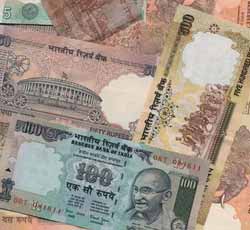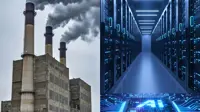S&P revises outlook on India from negative to stable
26 Sep 2014
Standard & Poor's (S&P) Ratings Services has revised its outlook on India to stable from negative even as it reaffirmed its 'BBB-' long-term and 'A-3' short-term unsolicited sovereign credit ratings on India.
 The rating agency also affirmed its transfer and convertibility assessment of 'BBB+' for India.
The rating agency also affirmed its transfer and convertibility assessment of 'BBB+' for India.
S&P said India's improved political setting offered a conducive environment for reforms, which could boost growth prospects and improve fiscal management.
''The ratings on India reflect the country's strong external profile, combined with its democratic institutions and free press, both of which underpin policy stability and predictability. These strengths are balanced against the vulnerabilities stemming from the country's low per capita income and weak public finances,'' the rating agency stated in a release.
S&P noted that India has relatively little external debt and a much improved external liquidity position, which itself is strength.
It has projected India's net external debt net of external assets to be around 6 per cent of its current account receipts (CARs) for the fiscal year ending 31 March 2015.
Central bank reserves well exceed public sector external debt, reflecting the public sector's ability to finance practically all of the country's borrowing requirement domestically. ''On a broader definition, India's net external liabilities are a low 49 per cent of CARs based on our projections at the end of the current fiscal year in March 2015, and nearly half of gross external liabilities consist of inbound foreign direct investments.''
S&P noted that India managed to reduce its foreign exchange outgo even as its current account has improved in recent years after restrictions on gold imports and slower domestic investment demand. The Reserve Bank of India has rebuilt its foreign currency reserves to cover about 5.5 months of current account payments.
However, S&P said, it expected India's current account deficit to widen from its current low of 1.8 per cent of GDP (as of March 2014) as investment picks up, although gross external financing needs are likely to remain at or below the sum of CARs plus usable reserves in the next two to three years.
S&P, however, rued the fact that India's advantages of a well-entrenched democratic political system and the country's mature and stable institutions (including a free press), the system of checks and balances and long periods of stability, often get blunted by the paralysing effect of legislative gridlock and government ineffectiveness.
S&P has projected real per capita GDP growth in India to reach 5 per cent by next year, and per capita GDP to surpass $2,000 by 2017, from $1,550 at present.
The rating agency said India's low wealth level, as measured by per capita GDP, is one of the main constraints on the rating. A low per capita GDP implied a narrow tax and funding base upon which the sovereign can draw to carry a given debt burden, and a lower degree of policy flexibility in the event that dramatic measures are needed to address severe economic stress, it noted.
India's real per capita GDP growth, a measure of the economy's capacity to increase wealth, has dipped to about 4 per cent currently, from an average of 7.2 per cent in the five years to the end of the fiscal year ended March 2011.
The low levels of GDP has been reflected in India's weak public finances, which has a long history of general government fiscal deficits, averaging 8.8 per cent of GDP over the past 20 years, and an accumulated net general government debt stock of close to 70 per cent of GDP.
No government has so far been able to broaden India's revenue base (with general government revenue at about 21 per cent of GDP, of which only half are taxes) or trim expenditure. On the other hand, India's budget is saddled with extensive subsidies for food, energy, and fertilizer.
''More than 90 per cent of general government debt stock is primarily held by domestic banks and other financial institutions, often for regulatory requirements.''
Although real interest rates have been consistently negative, S&P said, the interest cost on government debt amounts to almost a quarter of government revenues. Fiscal flexibility is further constrained by the general shortage of infrastructure and basic government services.
With improved fiscal performance in the medium term, primarily from revenue-side improvements brought about by the planned introduction of a national goods and services tax (GST) and administrative efforts to expand the tax base, S&P projects India's net government debt to decline to below 60 per cent of GDP by the year ending March 2018, and with it, general government interest rate expense to just under 20 per cent of revenues. ''A faster pace of deficit and debt reduction is unlikely in our view. Hence, we believe fiscal and debt metrics are set to remain key rating constraints for some time,'' the rating agency stated.
S&P said it could further raise the rating if the economy reverts to a real per capita GDP trend growth of 5.5 per cent per year and fiscal, external, or inflation metrics improve and vice versa if the government's structural reform agenda stalls such that economic growth does not accelerate, or fiscal and debt ratios fail to improve.






















